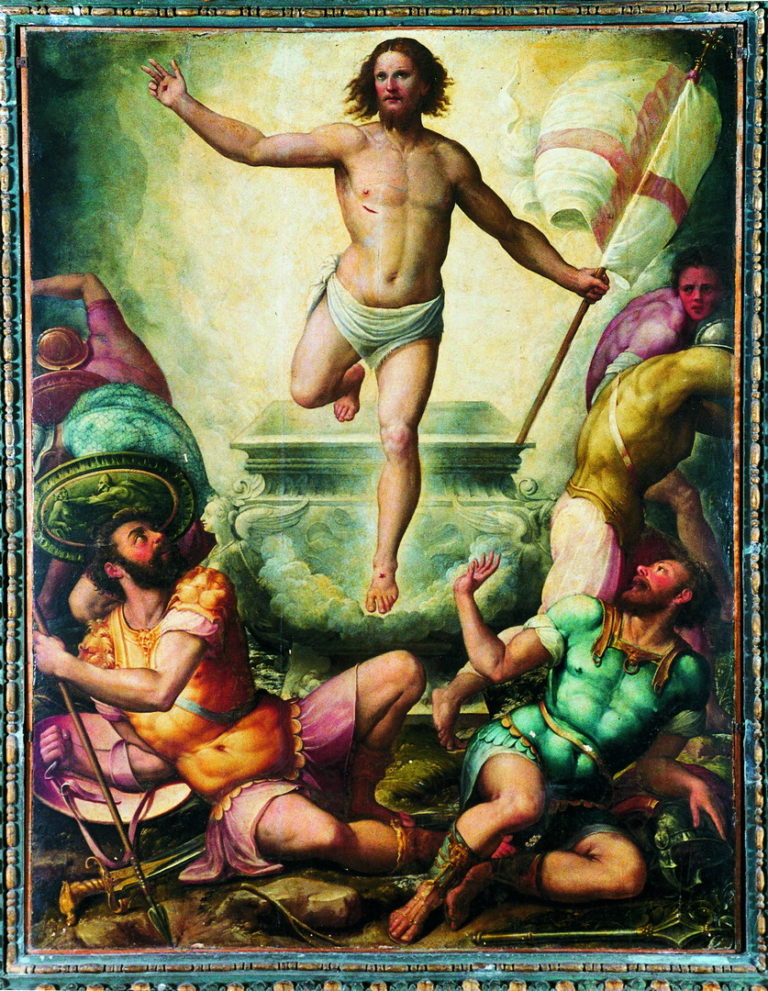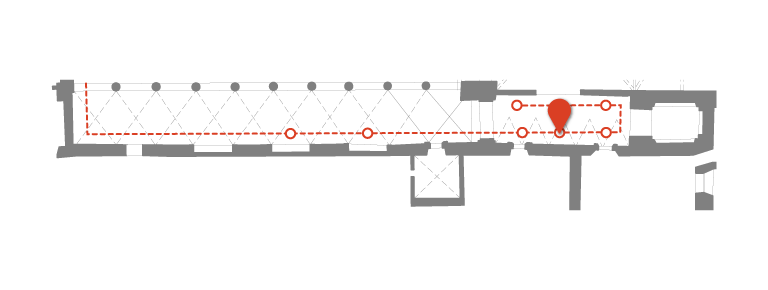Tu sei qui
THE RESURRECTION OF CHRIST
Orazio Alfani returned to his native city of Perugia in 1545, after a long stay in Sicily. He was given several commissions at San Pietro, beginning in 1548, the year in which he came to an agreement with Biordo degli Oddi for the decoration of his chapel. The paintings on the vaulted ceiling have fallen, and as a result the painting of The Resurrection remains the last evidence of this undertaking. Final payment for the painting was made in 1551. It represents the highest point in the artist’s development, when the influence of the later Raphael was strongest, and is recognizable, stemming from the Master’s Vatican Transfiguration. Lione Pascoli stresses how important it had been for Alfani to cultivate such profound knowledge, not only of the Roman works of the Master of Urbino, but also with those of Michelangelo (“not a day passed while I was in Rome that I did not go to see, to draw, to copy either one or the other?). This can be seen from the characters crowding the foreground of The Resurrection, inspired by Michelangelo’s work in both Rome (the Sistine Chapel) and Florence (the Medici tombs in San Lorenzo).


